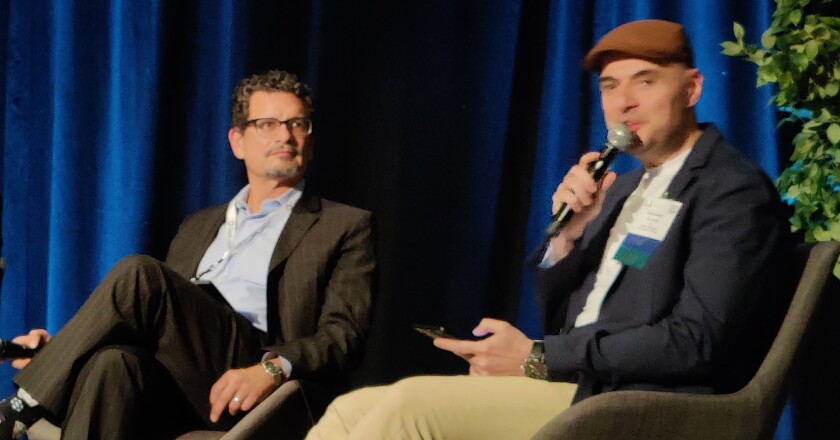
Dennis Noone/Industry Insider
The Public Defender’s Office is the nation’s largest and one of its oldest, having been created 107 years ago. With about 1,200 employees — more than 700 of whom are attorneys — managing the department can be like “herding cats,” Garcia said.
In a question-and-answer session, Al Rawi posed three key questions to Garcia. Following is a lightly edited account of their exchange.
Al Rawi: “How should technology and business leaders work together to start a digital transformation journey in state and local government?
Garcia: For a business leader and an IT director, having a “shared vision” is key: It’s essential that they agree on a “shared imperative — you have to share the ‘why?’” Having exceptional teams is great, but they’re of little value if they don’t work toward the same goal or vision, Garcia said. “Change isn’t hard,” he said. “It’s the uncertainty that change brings” that’s difficult. “The question of what that change is going to bring is uncertain on both sides, how it’s going to be implemented. And when you have that level of uncertainty, then the change is complex and nearly impossible.” Constant communication and check-ins between both sides of the house — business and IT — are important, he said.
Al Rawi: What is the best approach to change management in a large, complex and structured government organization?
Garcia: “The way you get the staff on board is to identify individuals within the organization who are champions to the product,” Garcia said. “They have to understand the ‘why.’ They have to stand up and say, ‘I get it; I want to go there.’” And then “empower them as champions, as ambassadors.” He said he gives his champions the information they need to talk to their peers about technology and change, “and then you empower them to do that, to share that information on the ground.” Garcia has “formal roadshows” where he and Al Rawi and other key leaders travel to the department’s 32 field offices and “explain to the people on the ground what it is you’re doing and why.” And, he said, “you share this responsibility with your IT team — that’s very, very critical. Most government employees think IT is all about flicking switches or fixing my laptop … they need to understand that IT is more complex than that. You need to identify the people within IT who can do that most effectively.” They can translate the business problem or need to the IT team, “and then communicate that solution back to their peers so they can see that something has been done.”
Al Rawi: Once you have implemented the digital transformation, how do you continue to communicate the change and the importance?
Garcia: “When I was first appointed by the county (in October 2018), in my first statement to my staff, I talked about technology and the importance of moving forward technologically, the importance of moving to the goal of becoming paperless, the importance of becoming a digital floating office off of a laptop … the importance of change and why I valued it. That conversation has to address their fears and concerns. As a leader, we don’t want to necessarily hear the kvetching. But I listen for the kernels of information (from staff) that’ll help me better what I’m doing or improve the system.”
*Government Technology and Industry Insider — California are part of e.Republic.







